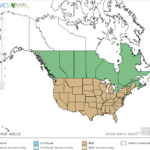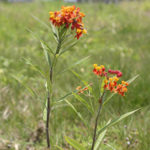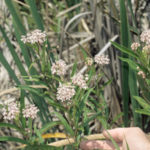Asclepias spp.
USDA, NRCS. 2018. The PLANTS Database (http://plants.usda.gov, 28 March 2018). National Plant Data Team, Greensboro, NC 27401-4901 USA.
Illustration: USDA-NRCS PLANTS Database / Britton, N.L., and A. Brown. 1913. An illustrated flora of the northern United States, Canada and the British Possessions. 3 vols. Charles Scribner’s Sons, New York. Vol. 3: 25.
What is Milkweed?
Physical Characteristics
- Vine or shrub with milky juice
Leaves:
Flowers:
Fruit:
- Dry
- Opens only on one side to release seeds when ripe
- Many seeded
Stem:
- Slender
- 1-6 feet tall
Where Does it Grow?
Milkweed can be found in marshes, swamps, ditches, road side, open fields, and along lakes and streams. The four described in more detail at the links below are wetland milkweeds.
Pros and Cons of Milkweed
Milkweed is the only plant eaten by Monarch butterfly caterpillars, one of the reasons their numbers are dropping is the loss of space for milkweed to grow due to mowing or pesticides.
Flowers are beneficial to native bees.
Submerged portions of all aquatic plants provide habitats for many micro and macro invertebrates. These invertebrates in turn are used as food by fish and other wildlife species (e.g. amphibians, reptiles, ducks, etc.). After aquatic plants die, their decomposition by bacteria and fungi provides food (called “detritus”) for many aquatic invertebrates.
What Type of Milkweed Do I Have?
There are 37 species of milkweed that are common in Texas. Four of these species are listed below. Click on the buttons to learn more about each species.






